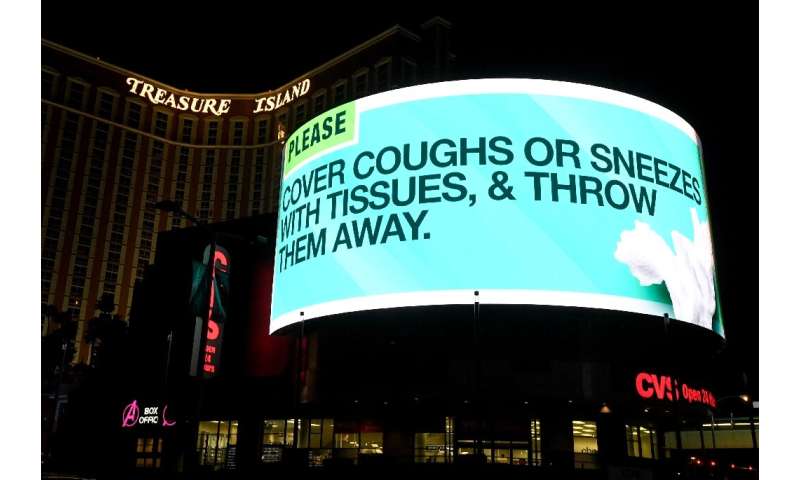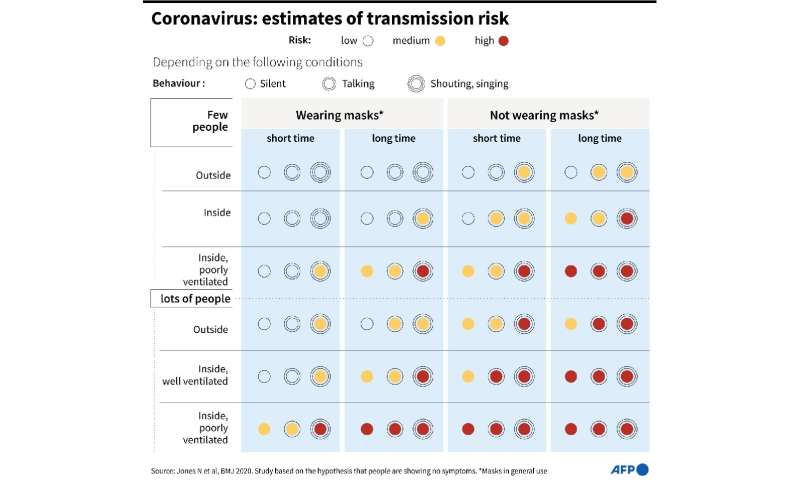For COVID-19, what is ‘safe distancing’? It depends…

One metres or two? Or is it six? When it comes to coronavirus social distancing, there is no single rule of thumb, researchers cautioned this week in a study.
Indoors or outside; the velocity and pattern of air flows; whether one is whispering, shouting or sneezing; air conditioning or open windows; duration of exposure; whether one is wearing a mask—all of these elements will determine how far is far enough when it comes to steering clear of COVID-19 infection.
“Rigid safe distancing rules are an oversimplification based on outdated science and experiences of past viruses,” said lead author Nicholas Jones, a researcher at Saint Thomas Hospital in London.
“Instead of single, fixed physical distance rules, we propose graded recommendations that better reflect the multiple factors that combine to determine risk.”
Around the world, living with COVID-19 has become a reality.
A widely available vaccine is months away at best, and the number of cases is on the rise again in many countries that had succeeded in bringing the epidemic under control.
But governments at all levels—eager to avoid the lockdowns that devastated their economies—are looking for ways to fine-tune policy responses in a middle ground.
On Thursday, for example, France’s prime minister—flanked by his ministers of education and health—outlined new measures that included mandatory mask wearing in Paris and its immediate suburbs, among other regions.
Previously, masks had been obligatory only in public transport, shops, and public buildings.
Low- and high-risk scenarios
From the earliest days of the pandemic, experts have sharply debated what constitutes “safe” social distancing.
The World Health Organization (WHO) recommends “maintaining at least one metre (three feet) distance between yourself and others,” and many national health authorities have issued similar guidelines.

But experiments conducted in recent months suggest this may still be too close for comfort, at least in some circumstances.
“Eight out of 10 studies in a recent systematic review showed horizontal projection of respiratory droplets beyond two metres for particles up to 60 microns,” Jones and colleagues noted in the BMJ, a medical journal.
In one study, droplets that could contain live virus were detected more than six metres from the source, a distance consistent with sneezing, coughing or vigorous singing.
These findings could explain the case of a choir practice in the United States in which a person carrying the SARS-CoV-2 virus infected 32 other singers—with 20 other likely cases—despite physical distancing.
Sports clubs, boxing or martial arts gyms, churches, call centres are all places where people sing, pant or talk loudly.
Interestingly, there have been few ‘super-spreader’ incidents on commercial flights, perhaps because people don’t talk much and are more likely to be wearing masks, the authors speculated.
How far a virus might spread in an indoor setting is also determined by whether the air in a room is ventilated with open windows or recirculated with an air conditioning system.
The density of occupation is likewise key.
Taking all these factors into account, Jones and his team devised a chart—which could also serve as a guide—to measure risk in different situations.
If you are speaking quietly in a well-ventilated, sparsely-populated office space while wearing a face mask, for example, risk is minimal.
The same scenario without a face mask, or in a crowded office, translates into a higher but still moderate degree of risk.
Source: Read Full Article
